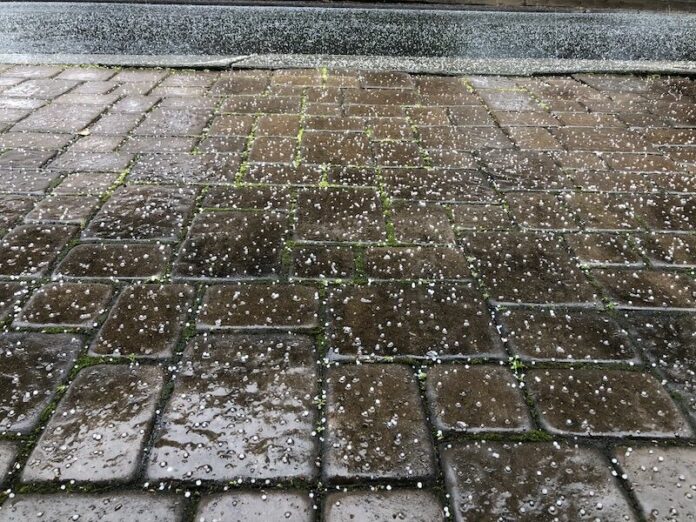This Week in H’burg is a weekly column featuring photos and fun facts from local photographer Pierre Ratté. Each week we’ll feature a new photo from Ratté along with a fact about the subject matter of the photo.
Hail is not necessarily a winter event. Ice pellets form around a drop of water in a severe thunderstorm with strong updrafts and upper atmosphere temperatures below freezing. The cumulonimbus clouds that form thunderstorms can reach heights of 50,000 ft. These giant puffy piles of moisture generate their own internal weather system. Updrafts lift raindrops to the upper atmosphere, where the air is thinner and colder, freezing the droplet to an ice pellet that falls back down through the cloud. As it falls, it gathers more water around it, and if it hits an updraft, the freezing and falling cycle begins again. These cycles build layers, which you can see in cross-section like the rings on a tree. Fun facts: hailstones one inch in diameter fall at about 50 mph, while hailstones two inches in diameter fall at approximately 75 mph; the largest hail stone in the U.S. fell in South Dakota in 2010, measuring 18.5 inches in diameter and weighing almost two pounds; on an average year, hail damages one billion dollars of U.S. agricultural products. Here’s hoping that the recent hail event in Healdsburg and surrounding areas did not hurt our already challenged farmers, ranchers and vineyard owners.
Pierre Ratté posts a daily picture on Instagram, Facebook and TodayinHburg.com. He can be reached at pj*****@****ud.com. His book “100 Days Sheltering-In-Place” can be purchased at Levin’s and Copperfield’s bookstores, TodayinHburg.com or Amazon.com.








